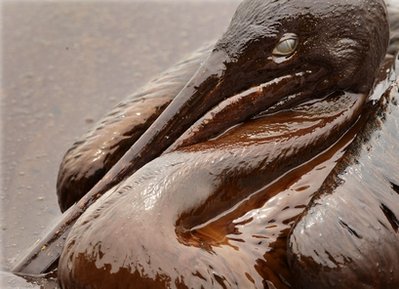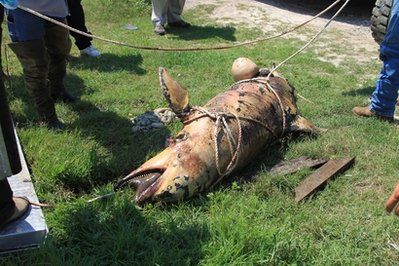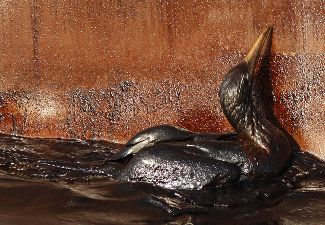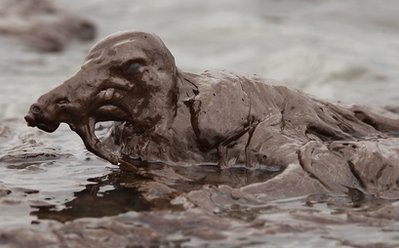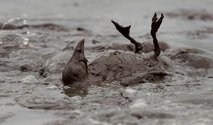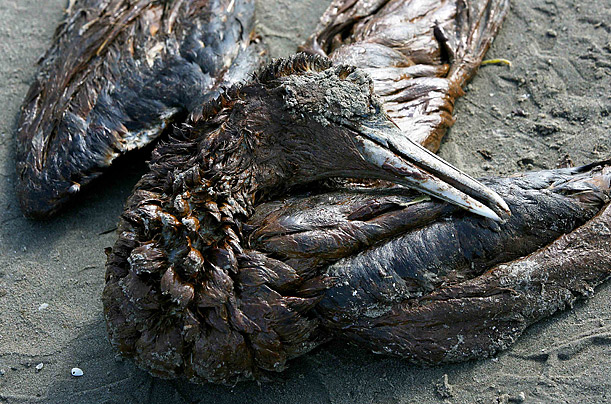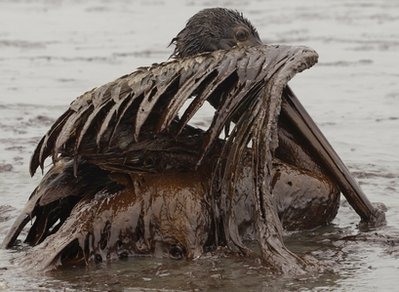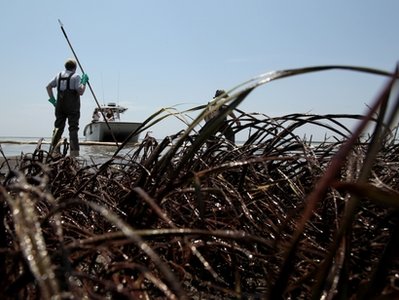Oil spil disaster

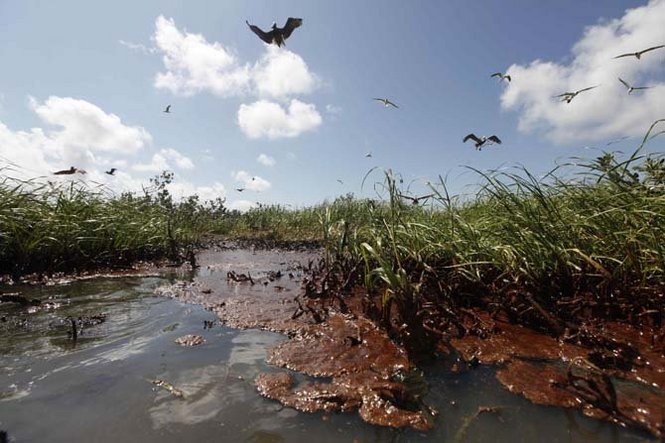
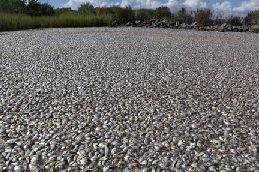
These pictures show the ecological disaster which started on 20 April 2010 with the blow-out on the oil rig Deepwater Horizon operated by the oil company BP in the Gulf of Mexico. The rush to move the rig to a new location, grave errors by the crews of BP and Halliburton cementing a recently drilled well and disregard of safety precautions have caused the accident: oil and gas escaped with great force up the one mile long steel pipe from the sea bottom to the drilling platform, the rig set fire and sank causing the death of 11 oil workers.
Since that date, some 50,000 to 60,000 barrels of crude oil together with 40% methane gas have been gushing out of the well every day (BP maintained for a long time it was 5,000 barrels per day). On May 16, reports revealed the discovery of enormous oil plumes deep in the Gulf. One of these plumes measured 22 miles long, 6 miles wide, and 3,300 feet thick. On July 16, after almost three months BP finally managed to stop the flow of oil by placing a containment cap over the broken blow-out preventer. It is estimated that approx. 700,000 tons (4,4 million barrels or 185 million gallons) of oil have escaped into the Gulf of Mexico since April 20. The Exxon Valdez disaster of 1989 involved 40,000 tons. After drilling for over three months a so-called relief well, the Maconda well was definitely killed early September, 2010.
Hundreds of miles of coastline of Louisiana (7,721 miles of tidal shorelines), Mississippi, Alabama and Florida have been contaminated and thousands of hectares of marshlands and mangroves along these coasts have been severely affected by the toxic oil (containing toluene, benzene, xylene, arsenic, naphtalene) and the even more toxic dispersants used by BP. Thousands of birds, notably brown pelicans, gannets, herons, etc. and different species of sea turtles, dolphins, fish, crab and shrimp have died in agony drowned or poisened by the oil and the methane gas. Just in November 2009, the US government removed the brown pelican from its list of endangered species. An estimated 40,000 brown pelicans live in the northern reaches of the Gulf of Mexico. Various species of plants, fish and crustaceans are now at risk due to the disaster. The fragile wetlands and estuaries of Louisiana serve as spawning and nursery grounds for many fish species and crustaceans. The oil which has entered into the marshlands is likely to slowly ooze out during many years, continuing to poison wildlife in the marshes.
Oceanists fear the oil plumes could have serious effects on the marine environment. Research of early August confirms the existence of a huge plume of dispersed oil deep in the Gulf of Mexico and suggests that it has not broken down rapidly, raising the possibility that it might pose a threat to wildlife for many months or even years. In addition, scientists of the University of Georgia have found early September thick layers of oil on the seabottom with underneath it a layer of dead shrimp and other small animals. It has now been established that more than 50% of the total volume of oil discharged from the Deepwater Horizon blowout remains in the Gulf ecosystem.
On June 16, 2010 BP agreed to put $ 20 billion in a compensation fund for economic losses by the fishing, tourism and other businesses. In May, EALA has filed a claim against BP for $ 80 million for damages, injury and death of wildlife in the Gulf of Mexico. The claim number is 6866124156254. On 18 June, 2010 the Center for Biological Diversity in Tucson, Arizona (www.biologicaldiversity.org), sued BP in a federal court New Orleans for fines for $ 19 billion ($ 19,000,000,000).
